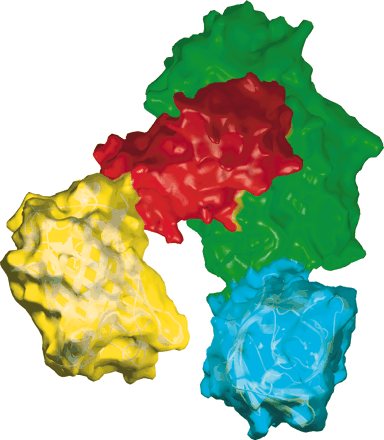Sites of interest on the World Wide Web - edited by David Siderovski
Slaying the Signaling Beasts: A Herculean Task
In this issue of MI , Wing and colleagues detail the variety of signaling inputs and outputs that crisscross through the newly identified epsilon isoform of phospholipase C (273–280). How can one possibly keep track of the ever-growing webs of cell signaling networks that resemble the multiheaded Lernean Hydra ( http://www.aaskolnick.com/hydra.htm) slain as Hercules’ second labor? Complementary efforts by the American Association for the Advancement of Science ( http://www.aaas.org) and the Nature Publishing Group ( http://npg.nature.com) are squarely aimed at wrestling these beasts. Science’sSignal Transduction Knowledge Environment ( http://stke.sciencemag.org) is a partially free and partially fee-based web-journal-cum-clearinghouse that offers expertly curated “Connection Maps” of signal transduction pathways, as well as reviews and perspectives, written by specialists in the field, and “community forums” for online discussions. Nature’sSignaling Gateway ( http://www.signaling-gateway.org) is a free Web portal, co-produced with the Alliance for Cellular Signaling ( http://www.afcs.org), that will soon have the capacity to interlink data from its growing list of Molecule Pages to create dynamic maps of signaling networks “on-the-fly.”

What if the particular pathway you are working on has yet to be explored by these publishing groups? Software packages like Paracel’s PathWorks ( http://www.paracel.com) can go beyond Microsoft’s Powerpoint or Adobe’s Illustrator by facilitating your network sketchings with pre-drawn molecular entities like serpentine receptors, ion channels, etc. However, the ability to actually model information flux through these networks on your desktop computer will presumably rely on the efforts of groups like BioSPICE ( http://www.biospice.org) that are currently creating open-source software frameworks and tool sets for modeling dynamic cellular network functions.
βARKing Up the Right Tree?
Also in this issue of MI , Hata and Koch survey the extensive experimental evidence pointing to β -adrenergic receptor kinase 1 (β ARK1) as a potential therapeutic target for congestive heart failure (264 – 272). Recently, a crystallographic structure of this kinase, in complex with its membrane-targeting partner Gβ1γ2 , has been reported by Tesmer, Lefkowitz, and colleagues ( http://www.sciencemag.org/cgi/content/full/300/5623/1256). Will this new information lead to structure-based drug discovery of β ARK1 inhibitors? You can contribute your own latent computational power to virtual screens of compound libraries via the nascent science of “distributed computational chemistry.” Groups such as Oxford’s Centre for Computational Drug Discovery ( http://www.chem.ox.ac.uk/curecancer.html) and the Smallpox Research Grid ( http://www.grid.org/projects/smallpox/) allow you to download screensaver software for your networked PC, which uses wasted CPU cycles to “dock” small molecules onto structures like c -Raf1 kinase and vaccinia virus type I topoisomerase. Might cardiovascular targets like β ARK1 be next in their queue?
“Got Structure?”
What recourse have you got when your pet protein doesn’t have a crystallographic or NMR structure solved? A great clearinghouse for the growing universe of Web-based structure prediction servers is the Polish Bioinformatics Site ( http://bioinfo.pl) created by the Bioinformatics Laboratory of the BioInfoBank Institute. Their Structure Prediction Meta Server ( http://bioinfo.pl/Meta/) will post your input polypeptide sequence to over a dozen competing 2D and 3D structure-predicting algorithms currently available on the Internet. Indeed, the Bioinformatics Laboratory also routinely evaluates the reliability of these Web resources ( http://bioinfo.pl/LiveBench). My personal favorite for ease-of-use, turnaround time, and clarity of information presented is the 3D-PSSM Fold Recognition Server ( http://www.sbg.bio.ic.ac.uk/~3dpssm/) of the Imperial College of Science, Technology & Medicine in the U.K. Just remember to restrict your prediction requests to polypeptides shorter than 800 amino acids.
- © American Society for Pharmacology and Experimental Theraputics 2003




